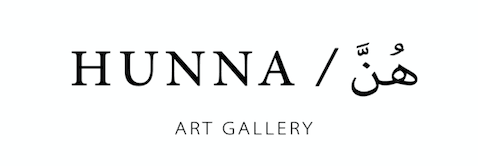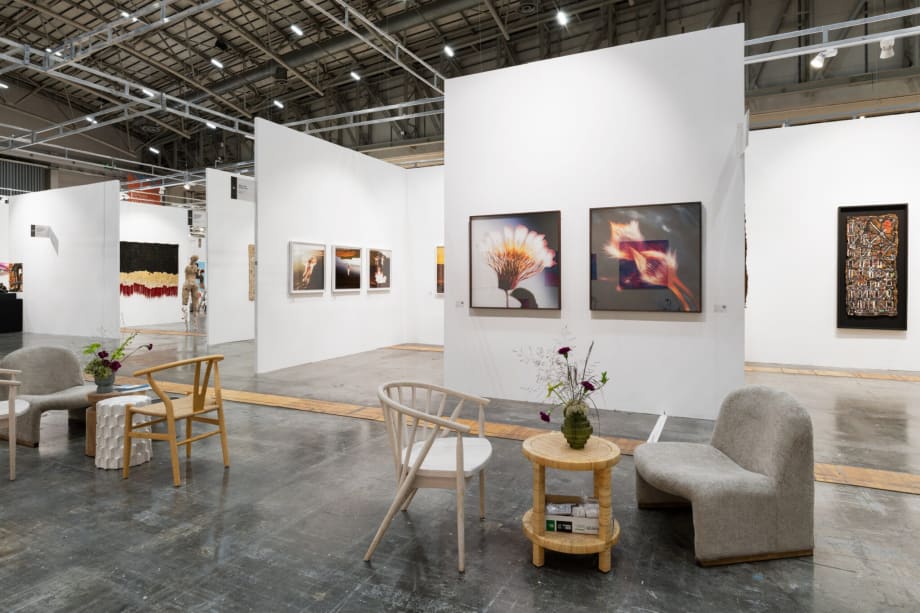The Investec Cape Town Art Fair, which presented its 12th edition this year, returned from February 21st to 23rd 2025. This year’s edition continued the Fair’s pursuit of solidifying its place as Africa’s preeminent art event, and the continent’s largest art fair. With over 120 exhibitors, 30 000 visitors, and 10 000 VIPs, it provided once again an esteemed platform for galleries, collectors, curators, artists, and art lovers and connoisseurs from all over the world, and Africa in particular, to engage in meaningful dialogue at the forefront of international contemporary art. Set in the heart of Cape Town, one of the continent’s distinguished cultural capitals, the Fair serves as a vital crossroads where the flourishing African art market meets the broader international art community.
In this special feature, we turn our attention to the voices of five distinguished women in the arts from the MENA region, whose work in the arts, as artists, curators, and gallery owners respectively transcends borders and regionalism within the continent. Each has played an integral role in shaping the narrative of contemporary art, in their respective countries, within the broader MENA region, as well as on the international stage. Their reflections on the fair and their broader contributions to the cultural discourse offer an insight into the nuanced and evolving relationship between the MENA and international art worlds, marking a significant moment in the ongoing dialogue of artistic exchange in the age of the cosmopolite.
We sat down with Asma Ben Aïssa, a Tunisian artist, Eman Ali, an Omani-Bahraini visual artist, Khadija Hamdi, a curator-gallerist who describes herself as being “rooted in Tunisia but branching into the universal, Lina Mowafy, an Egyptian artist and founder of Cairo-based Tam.Gallery, and Aleya Hamza, the founder and director of the Cairo-based Gypsum Gallery.
What emotions come with being of the few galleries and artists representing contemporary North African art at Africa’s most important art fair?
Khadija Hamdi: Being among the few galleries and artists representing contemporary North African art at Africa’s most important art fair carries a profound sense of responsibility and urgency. It is both empowering and challenging—because we are navigating a space where North Africa is sometimes overlooked within broader African narratives. This participation is an opportunity to assert Tunisia’s place in contemporary African art and create new conversations and connections that go beyond historical and geographical divisions. This is a significant milestone that integrates the Tunisian art scene into a broader African dialogue and strengthens the visibility of our artists on the international stage.
Asma Ben Aïssa: Showcasing contemporary Tunisian art on African and international stages is essential to highlighting its richness and evolution. Our artistic practices explore social, political, and cultural realities while preserving traditional skills and craftsmanship.
Tunisia, positioned at the crossroads of North Africa, the MENA region, and the Mediterranean, has a unique artistic identity shaped by its geography. This strategic location makes it a meeting point of influences, fostering cultural and aesthetic dialogues. Exhibiting on a major African platform reaffirms our belonging to the continent while embracing our plurality.
What is the importance of showing contemporary MENA art to the African as well as international audience?
Aleya Hamza: As cultural narratives are often shaped by dominant global centers, it remains increasingly important to create space for nuanced, locally rooted artistic voices. Contemporary Egyptian artists challenge reductive understandings of the region and bring forward perspectives that are often overlooked. The work contributes to larger conversations on history, identity, and representation—engaging both African and international audiences in this crucial dialogue.
Eman Ali: It’s important to make art that speaks to you. Art that holds meaning, that reflects what you believe in, no matter where you come from. That’s the real work. Sharing it with a global audience is about adding to the conversation and more importantly expanding ideas of who makes art, who it’s for, and why it matters.
The Gulf has its own stories, histories, and aesthetics that deserve to be seen, not as an exception, but as part of the broader, evolving landscape of contemporary art. The Arab world is big, with shared traditions but also deeply distinct identities.
Lina Mowafy: Art is a universal language understood by all people, and Egyptian art is no exception. It serves as a powerful tool of communication, especially when other channels are challenged.
Through our art, the outside world can truly learn about contemporary Egypt without modification and agendas. It is our soft power.
Khadija Hamdi: Tunisia is often perceived through a Euro-Mediterranean lens, while its deep African connections are frequently overlooked.
Tunisia has long been a cultural and intellectual crossroads, blending Arab, Berber, Mediterranean, and African influences. Contemporary artists reflect this complex identity while addressing urgent socio-political issues.
In Tunisia’s current socio-political climate, where economic and political instability persist, art plays a vital role as a space of freedom, resistance, and imagination. The promises of the Arab Spring revolution may not have been fully realized, but Tunisia’s cultural and artistic scene has remained one of the most dynamic in the region.
Asma Ben Aïssa: In the current socio-political context, Tunisia is undergoing a social transformation that directly influences artistic creation. Artists are developing innovative practices that do not merely reflect the context but actively engage with it—becoming forms of resistance, affirmation, and projection into the future. Highlighting this scene today means asserting its role in contemporary debates on memory, identity, and knowledge transmission while ensuring it claims its rightful place on the global stage.
Do you feel a social responsibility as women involved in the arts in the MENA region, being present at Africa’s largest art fair?
Eman Ali: I don’t walk into spaces thinking about being the only Omani artist or the broader expectations that come with being an Arab woman. If anything, I resist that kind of framing. My work is the truest reflection of me, it carries the weight of where I come from, both Oman and Bahrain, the things I’ve seen, and the stories I want to tell. That’s the responsibility: to make the work, make it honest, and make it matter.
Asma Ben Aïssa: Taking part in Africa’s largest art fair is a crucial recognition for the North African scene, which deserves greater visibility.
North African artists have an essential voice in both the African and international art scenes. This opportunity strengthens their presence in global networks and encourages dialogue with other artistic communities on the continent.
Lastly, is there a feeling of solidarity between the attendees from the MENA region physically present at the Fair?
Lina Mowafy: Yes, there is a feeling of solidarity. To be fair, there was also fantastic support from South African galleries and others, such as those from Nigeria.
The MENA sense of solidarity arises from a pre-existing sense of community across the region. Shared language, religion, and similar interests create a bond. Like all neighbors, we are effortlessly attuned to each other’s lives and events, which becomes part of our emotional fabric.
Eman Ali: There was this one doctor from Oman who lives in Cape Town who had never been to the fair before. He saw my name and where I was from on the board, and made a point of stopping by to say hello, which I really appreciated. If anything, I felt more uplifted by the visitors, especially the students. That kind of engagement, that curiosity that’s what I really connected with.
Aleya Hamza: There is a shared sense of solidarity among MENA artists, curators, and gallerists at the fair, which stems from a mutual understanding of the challenges we face in representation and recognition. Many of us operate within art ecosystems that are still underrepresented on global platforms.
Khadija Hamdi: I received visits from curators and some key figures in the MENA region’s art scene. This gave us the opportunity to discover and introduce our artists, as well as to discuss the state of the arts in Egypt, Algeria, and Tunisia. There is a sense of solidarity that I hope will continue to grow, because it is more motivating, and more compelling to act positively when you are part of an ecosystem, rather than acting alone. This dynamic of collaboration is essential to strengthen the presence and recognition of artists from the MENA region on the international stage.


